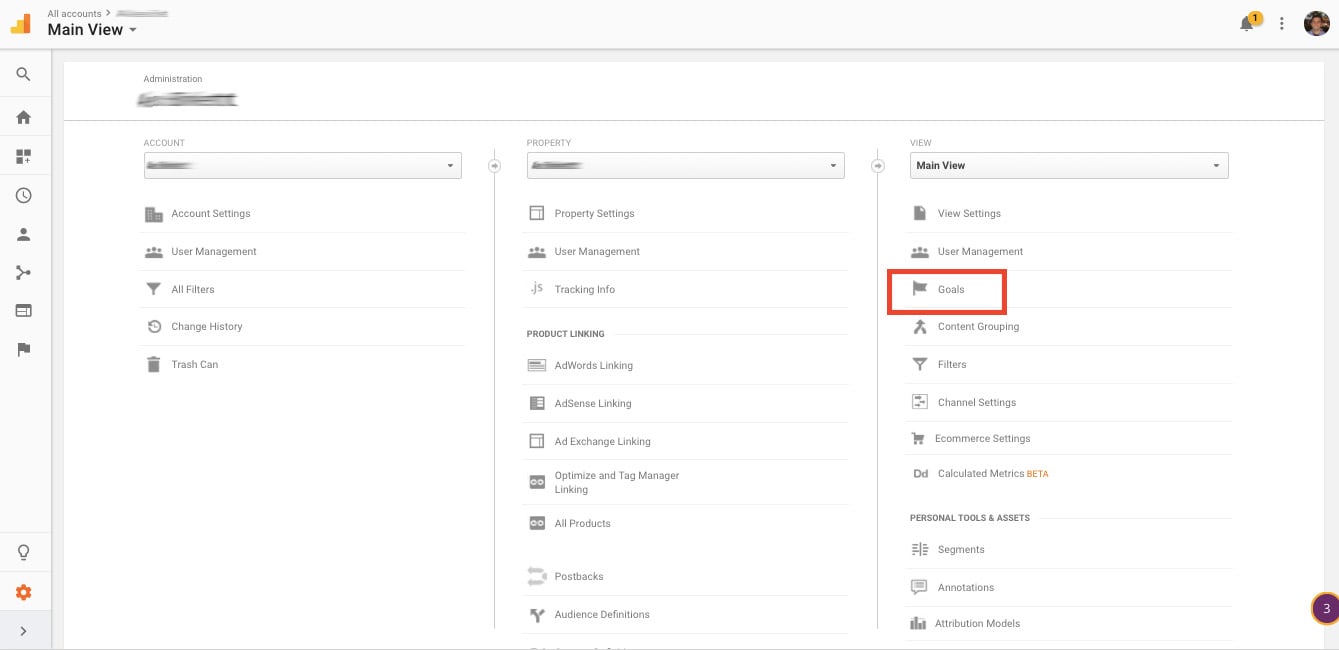What Data Is Google Analytics Goals Unable to Track: Important Information
What Data Is Google Analytics Goals Unable to Track: Important Information
Blog Article
Introducing the Blind Attractions: Comprehending What Google Analytics Goals Can not Gauge
In the world of electronic analytics, Google Analytics stands as a powerful device for tracking and analyzing on-line user communications. Nonetheless, amidst its robust capacities, there exist blind areas that often avert measurement. Understanding what Google Analytics objectives can not measure is crucial for getting a detailed sight of user behavior and involvement. As we explore the intricacies of these blind areas, we reveal an intricate web of uncharted territories that hold beneficial insights right into individual activities and motivations, difficult traditional knowledge and shedding light on the constraints of our data-driven understanding.
Individual Actions on External Operatings Systems
Understanding exactly how customers engage on outside platforms is vital for enhancing on the internet strategies. Outside systems, such as social media networks, recommendation sites, and on the internet forums, play a substantial duty in driving traffic to a company's website. By evaluating individual actions on these systems, companies can obtain useful insights into the efficiency of their marketing initiatives and the choices of their target market.
One key facet of individual habits on external systems is the recommendation resource. By tracking where the individuals are originating from, services can recognize which platforms are driving the most traffic to their internet site. This info can help business allocate their resources better, concentrating on the systems that yield the most effective outcomes.

Offline Communications and conversions
Evaluating customer actions on exterior platforms provides useful understandings into on-line techniques; however, taking into consideration offline conversions and interactions is equally necessary for a thorough understanding of a company's general efficiency. Offline conversions, such as in-store purchases or phone queries, play a considerable duty in several organizations' success.

Acknowledgment Beyond Last Click
When diving right into the realm of electronic advertising analytics, it becomes necessary to look past the single touchpoint of the last click for an extra thorough understanding of attribution. While Google Analytics gives useful insights right into user behavior, depending entirely on last-click attribution can be limiting - what data is google analytics goals unable to track. Attribution models that surpass the last click use a much more nuanced sight of the client trip, taking right into account all the touchpoints that result in a conversion
Acknowledgment past the last click enables online marketers to assign credit scores to different interactions along the conversion path, offering a more clear picture of the effectiveness of different redirected here advertising channels. By exploring multi-touch attribution models such as linear, time decay, or position-based attribution, businesses can much better allocate their marketing budgets and enhance their strategies for optimal impact.
Comprehending the influence of each touchpoint in the conversion process is important for making notified decisions and making best use of ROI. By welcoming acknowledgment past the last click, services can gain much deeper understandings into client behavior and tailor their advertising initiatives extra successfully.
Cross-Device and Cross-Browser Tracking

In a similar way, cross-browser tracking complements cross-device monitoring by capturing individual behavior as they switch over between different internet internet browsers. Comprehending exactly how users interact with web sites on numerous internet browsers can aid marketing professionals optimize their on-line experiences to make certain consistency and functionality across various systems.
Qualitative Information and User Intent
Recognizing user intent via qualitative information analysis is essential for creating targeted electronic advertising strategies that resonate with the needs and choices of the target audience. Qualitative information supplies understandings into the 'why' behind customer activities, clarifying inspirations, emotions, and preferences that quantitative information alone can not capture. By assessing individual responses, remarks, and interactions, marketing professionals can uncover beneficial details regarding best site user intent, permitting them to tailor their messaging, content, and offerings to much better align with what their target market is looking for.
Qualitative information additionally aids in understanding the context in which individuals engage with an internet site or application. This contextual understanding enables marketers to develop even more appropriate and tailored experiences, eventually driving greater engagement and conversion prices. By delving into customer intent through qualitative data analysis, companies can obtain a much deeper understanding of their target audience, resulting in a lot more reliable marketing approaches that fulfill users' requirements and expectations.
Final Thought
To conclude, Google Analytics objectives have restrictions in measuring individual actions on exterior systems, offline conversions, acknowledgment beyond last click, cross-device and cross-browser monitoring, and qualitative data associated with user intent. what data is google analytics goals unable to track. It is essential for companies to be familiar with these dead spots in order to supplement their data analysis with click for source other tools and techniques to obtain a more extensive understanding of their audience and improve their overall digital marketing techniques
By analyzing individual actions on these systems, companies can obtain important insights right into the performance of their marketing initiatives and the preferences of their target audience.
Assessing customer actions on external systems provides valuable insights right into on-line strategies; however, thinking about offline conversions and interactions is just as essential for an extensive understanding of a firm's overall efficiency.In digital marketing analytics, relocating beyond last-click attribution to check out cross-device and cross-browser tracking is necessary for acquiring an all natural understanding of user interactions across different systems and tools. By examining customer feedback, remarks, and interactions, marketing experts can reveal valuable information regarding customer intent, allowing them to customize their messaging, web content, and offerings to better align with what their audience is looking for.
By diving into customer intent via qualitative data evaluation, services can get a deeper understanding of their target audience, leading to a lot more efficient marketing techniques that meet customers' demands and expectations.
Report this page